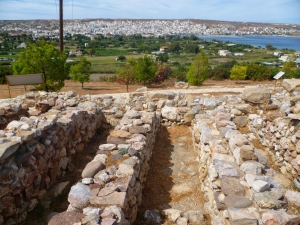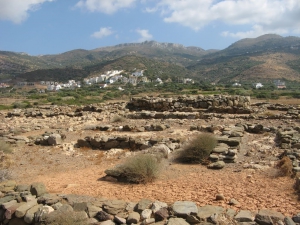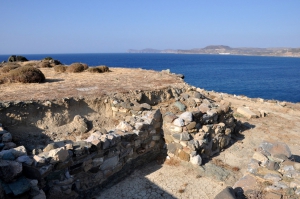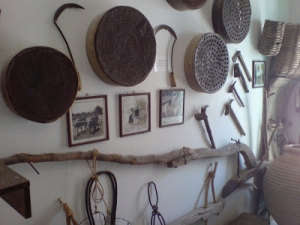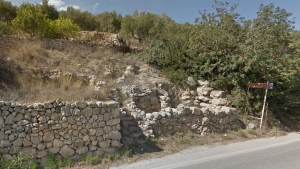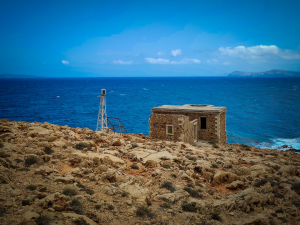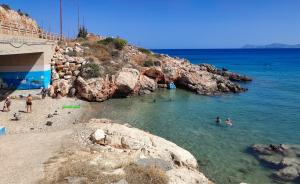The Minoan settlement of Petras was built on a low hill near the present city of Sitia. It is believed by many researchers that this was the site of ancient Etea or Etida, from where the sage Myson came from.
The ruins of the largest Minoan cemetery in Crete have been discovered in this area with 252 graves from the early Minoan period, 1800 vases and many artefacts buried with the dead.
The archaeological site of Trypitos is located on a small peninsula, 3km east of Sitia, near the beach Karavopetra, which has stunning view to Sitia city. It is considered to be the ancient city of Sitia, Itia, which was originally the port of Praesus. The city flourished in the Hellenistic period (350BC-50BC).
The Folklore Museum of Sitia was founded in 1975 and is housed in a beautiful neo-classical house. The collection refers to the town of Sitia in the second half of the 19th and early 20th century.
At the road connecting Piskokefalo and Sitia we meet the remains of an excavated two-storey Minoan mansion. We can still discern the remnants of rooms, stairs and the protective boulders coming from the neighbouring river of Pantelopotamos or the sea.
The Lighthouse of Sitia, also known as Exo Fanari, is located on the cape Vamvakia north of Sitia airport. It belongs to the network of lighthouses built by the French Lighthouse Company at the end of the 19th century throughout Crete and was put into operation in 1892.
A few meters north of the main port of the city of Sitia, the main road that leads to the airport passes by the Chlouverakis Park. Right next to it is the picturesque cove of Soultanina. Access is very easy either by car or on foot.
- 1
- 2











